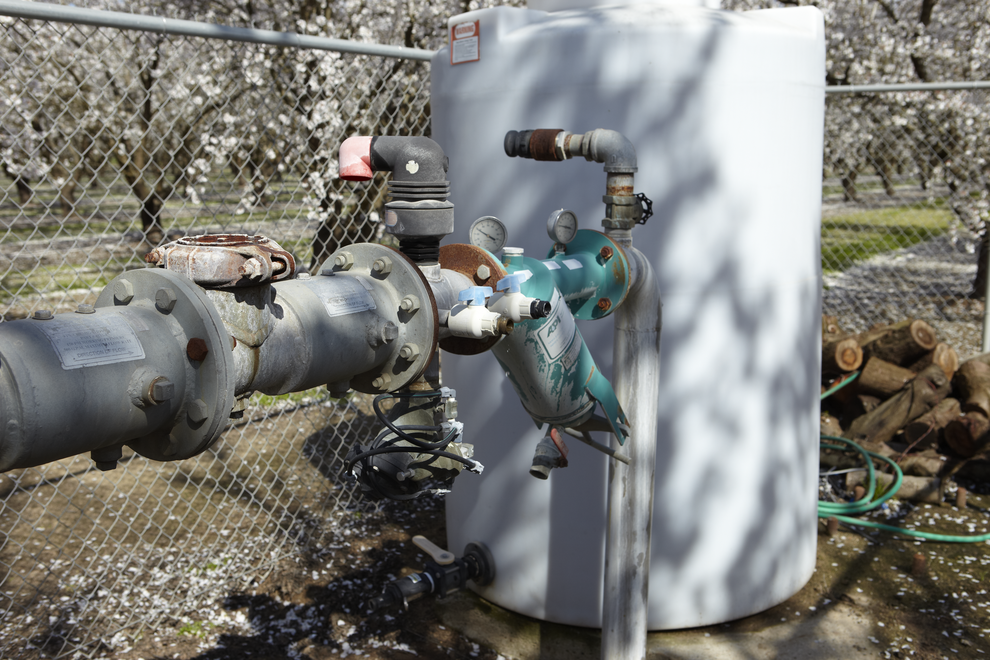In early June, the clock quietly started ticking on one of the most important new environmental regulations in decades for Central Valley agriculture, including almond growers: the Nitrate Control Program. This program is a new effort by the Central Valley Regional Water Quality Control Board (Regional Board) to reduce impacts of nitrate in groundwater and ensure safe drinking water for all Central Valley residents.
A dramatic departure from traditional “command-and-control” regulatory programs, the Nitrate Control Program creates a new “alternative compliance” option for farmers, dairies, food processors and manufacturers and many others who often are not able, with current technology and practices, to meet the state’s extremely stringent targets for nitrates in groundwater.
Instead of forcing permit holders to meet groundwater quality targets immediately, the new program allows local groups of water quality permit holders to form “Nitrate Management Zones” to work together toward meeting those goals. Under this option, permit holders collaborate to prepare local management plans with reasonable steps to control and reduce nitrate impacts to groundwater, while also committing to provide safe drinking water to all residents whose supply has been impacted by nitrate.
In exchange, the Regional Board provides a much longer timeframe – up to 35 years – to gradually improve technology and practices to meet state water quality standards. But this extra time doesn’t relieve growers of all responsibilities – they must still comply with requirements of the Regional Board’s Irrigated Lands Program (ILRP) orders, such as following nutrient management plans.
On May 29, the Regional Board officially launched the Nitrate Control Program by mailing more than a thousand certified letters to water quality permit holders in areas of the valley where groundwater is most impacted by nitrate – a large swath of land covering most of the east side of the Central Valley, between Modesto and Tulare.
The letters give water quality permit holders just 270 days to form nitrate management zones, and then develop and submit plans to the Regional Board.
Almond growers did not receive this letter but are still subject to the Nitrate Control Program.
Certified letters were not mailed directly to farmers, including almond growers, who are regulated under the ILRP1. Instead, letters were mailed to those farmers’ water quality coalitions2. This is because most water quality coalitions are expected to automatically enroll their members in Nitrate Management Zones, collecting and passing on costs from growers to participate in those zones.
“Just because almond growers did not receive the letter does not mean they do not need to comply with the regulation,” said Gabriele Ludwig, Ph.D., director for Sustainability and Environmental Affairs for the Almond Board of California. “However, their Water Quality Coalitions are expected to assist growers in complying and are working toward a smooth process. Almond growers should be aware that this will likely lead to eventual increases in Water Quality Coalition membership fees.”
Most almond growers south of Sacramento, and some located further north such as in Yolo County, will eventually be required to abide by this regulation.
“Fortunately, while there will be costs associated with complying with this regulation, it also provides important flexibility, including more time for growers to meet California’s extremely stringent water quality objectives,” Ludwig said.
The first round of letters went to ILRP water quality coalitions in so-called “Priority 1” areas, including the Modesto, Turlock, Chowchilla, Kings, Kaweah, and Tule subbasins. These Priority 1 subbasins include all or parts of the following ILRP Water Quality Coalitions:
- East San Joaquin Water Quality Coalition
- Kaweah Basin Water Quality Coalition
- Kings River Water Quality Coalition
- Tule Basin Water Quality Coalition
A map of Priority 1 areas can be found at www.cvsalts.info. Priority 2 areas are expected to follow suit in the future, but that will not take place for at least another year.
What should almond growers do now?
“Water Quality Coalitions are taking the lead in forming Nitrate Management Zones,” Ludwig said. “They are working to make sure all of their members are enrolled in management zones and are aware of the costs. Growers should pay close attention to bulletins and notifications from their coalitions.”
Growers in Priority 1 areas who want to learn more about Management Zone formation meetings, proposed drinking water programs and costs can contact the following persons:
- Modesto Subbasin and Turlock Subbasins: Parry Klassen, East San Joaquin Water Quality Coalition, (559) 288-8125 / klassenparry@gmail.com
- Chowchilla Subbasin:
- Christina Beckstead, Madera County Farm Bureau, (559) 674-8871 / cbeckstead@maderafb.com
- Sarah Woolf, Water Wise, (559) 341-0174 / sarahwoolf@me.com
- Kings Subbasin:
- Charlotte Gallock, Kings River Conservation District, (559) 237-5567 x105 / cgallock@krcd.org
- Debra Dunn, Kings River Conservation District, (559) 237-5567 ext. 135 / ddunn@krcd.org
- Kaweah Subbasin: Sarah Rutherford, Provost & Pritchard, (559) 636-1166 / SRutherford@ppeng.com
- Tule Subbasin:
- David De Groot, Tule Basin Water Quality Coalition, (559) 802-3052 / davidd@4-creeks.com
- Don Tucker, Tule Basin Water Quality Coalition, (559) 802-3052 / don.tucker@4-creeks.com
1 https://www.waterboards.ca.gov/rwqcb5/water_issues/irrigated_lands/


